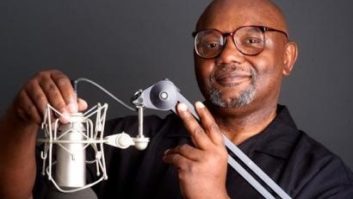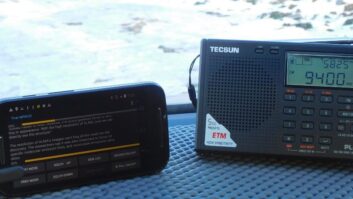
June is Microphone Month here at Radio World. This is one in a series of interviews with people who work in and around radio about the kinds of mics they love and why.
Ira Wilner is owner/engineer of Wilner Associates and the chief engineer of Monadnock Broadcasting Group and Saga Communications of New England.
Radio World: What are your choices for microphones?
Ira Wilner: The range of answers is very wide depending upon the situation. We engineers have very personal biases when it comes to studio mics. My favorite for on-the-street interviews was the EV 655C, a long omnidirectional stick mic made by Electro-Voice. It had a very large three-pin connector, precursor to the more diminutive XLR. It sounded really good when connected to a Nagra tape deck.
The Electro-Voice 635 is a small dynamic that works quite well in the field as a handheld mic mostly because it’s so rugged. Back in the last century EV warrantied it for life! They’d replace it even if you dropped it into a lake or down a waterfall and couldn’t retrieve it. Hammering nails with it was not too unusual.

My personal “go to” mic for recording musical events indoors and outdoors has always been the Shure SM81 electret condenser mic. I’ve used them in all sorts of inclement weather where the talent was uncomfortably cold or hot, in rain in bright baking sun and the mics have always worked well.
For studio voice I’ve always liked the Neumann U 87, but it’s a difficult mic to use. I’ve also used the same mic for location concert recording. For noisy locations the EV-666 used to be a workhorse along with the RCA 77-DX ribbon mic made famous by “The Tonight Show” with Johnny Carson.
For most radio jock use, I prefer the EV RE20. Easy to talk into and fairly insensitive to room acoustics. I’ve found the lower-cost RE320 to be good for most of the voices at my Saga stations. The RE27ND with higher output and more mid high peaking sounds a bit closer to a condenser mic.
Likely the best dynamic studio mic is a moderately priced Neumann BCM 705. Moderate only by Neumann standards. Some folks prefer the Sennheiser MD-421 for its fairly bright response. I find it a bit grating. But then I’m spoiled by pricy German condenser mics.
Then for sports and other events there are a bunch of headworn boom mics to choose from!
RW: What advice would you want to impart to someone learning how to shop for mics?
Wilner: First and foremost, don’t assume you can fix bad room acoustics and poor mic choice with mic processor equalization. That’s a Band-Aid approach.
Second, expensive condenser mics are typically poor choices for radio studio announce mics, even though they have the best sonic quality.
Third, consider different mics for different voices, male versus female.
Fourth, microphone sound and ease of use can be quite subjective. If possible demo the mic in the actual space it’ll be used.
Fifth, pay attention to the mic mounting structure. Not only can it conduct undesirable noise from the furniture, it can somewhat alter the mic sound itself. Use a good shockmount. And secure it with a boom arm or stand that has well-damped hardware.
Sixth, use audio cable designed for microphone signals, which are very low energy. Excessive capacitance will roll off the highs. Wire designed for permanent in-wall installation, where it’ll never be wiggled, will likely be microphonic! True mic cable is more flexible; does not use foil shield, which is likely to fracture; and is not microphonic, won’t generate an electrical signal when touched or wiggled.
Finally, a mic is only as good as the electronics it’s attached to. You can really screw up the sound if the pre-amp is mediocre and the gain structure from mic to final processor in the air chain is improperly set.
Read more of our recent coverage of microphones.







